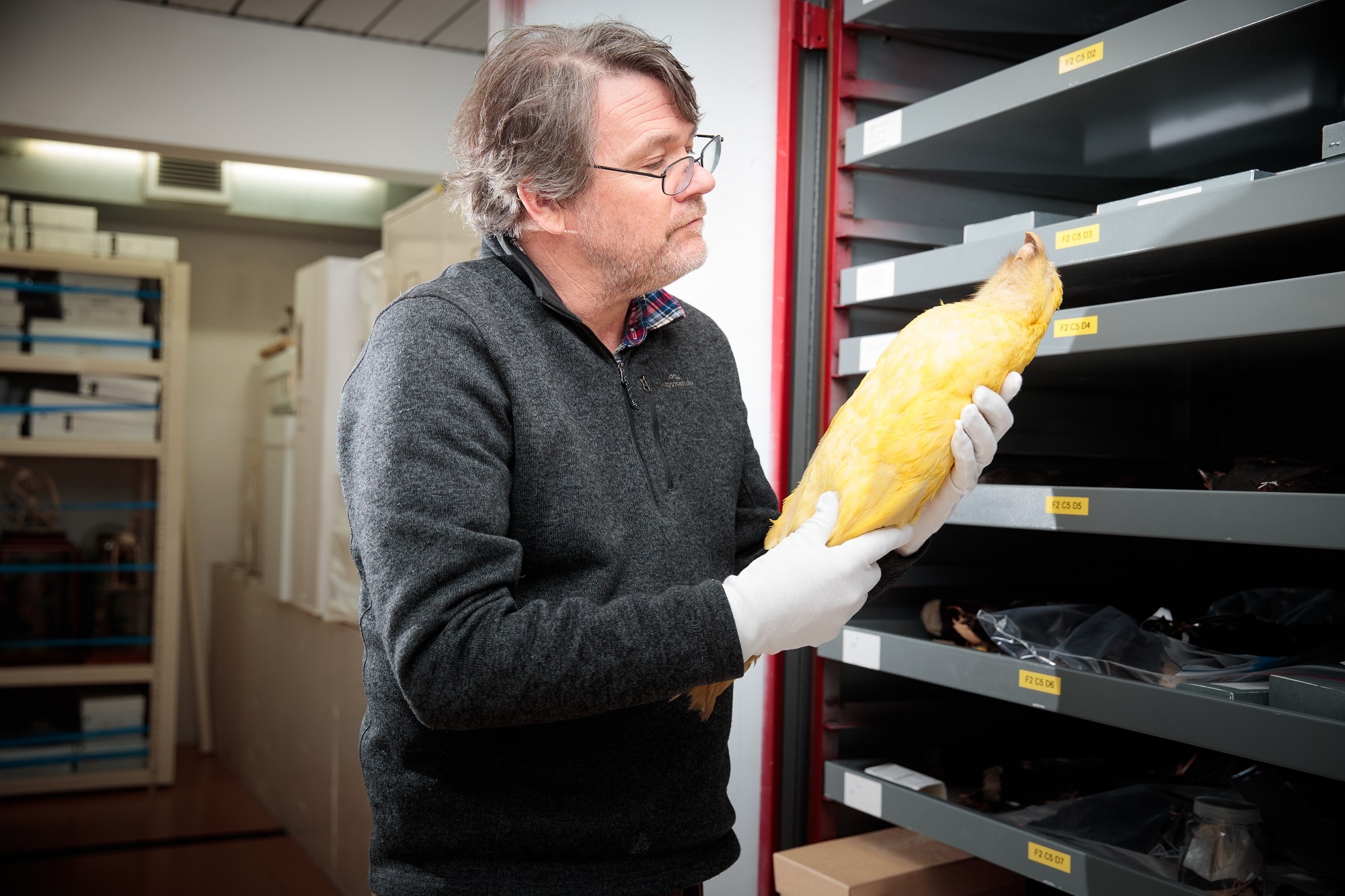Kākāpō are the only known flightless parrots. Once common throughout New Zealand, they are now critically endangered and survive only on small predator-free islands. Their plumage is predominantly green, mottled with yellow and brownish grey.

One specimen held at Canterbury Museum, however, is entirely yellow. Its colouration is due to a mutation known as ino, in which the synthesis of melanin is markedly reduced, resulting in the yellow pigments becoming clearly visible.
The bird was reportedly captured in December 1895 at Preservation Inlet, near Cromarty, Fiordland, by a group of young brothers, the Bradshaws, and their dog. For a while, the Bradshaws kept the kākāpō alive in a cage, but their father eventually offered the stuffed specimen for sale.
He considered it a distinct species, with an asking price of ₤500 (NZ $95,000 today). The specimen remained without a buyer for over a year. It was eventually purchased by the son of ornithologist Sir Walter Buller, allegedly at a much lower figure.
Buller himself said of the bird: “It would be difficult to imagine a more beautiful bird, although I do not, of course, claim for it more recognition than is due to an accidental variety. It is really a lovely bird and, if I may so express it, of striking personality.”
In 1923, the Bullers’ collection, including the yellow kākāpō, was acquired by Canterbury Museum for ₤500, the equivalent of about NZ $47,000 in today’s money.





